|
|
What Is A Major Die Break (or Cud)?
And What Isn't!
by Ken Potter - NLG
July 17, 2006
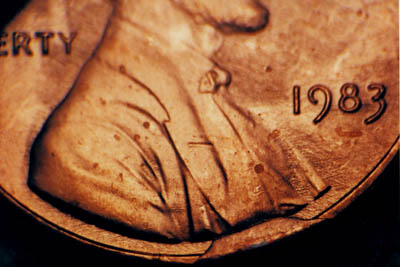
Photo © Ken Potter 2006
This 1983 Cent displays what is commonly referred to a Base Of Bust Cud.
This is the most common area for cuds to develop on Lincoln Cents
Collectors more often than not refer to a major die break under the slang term "Cud." The term has it roots in the early error-variety hobby when the use of nicknames was more prevalent than today. This is one of the few slang terms that has stuck. No matter what you want to call it, a Major Die Break or "Cud" always involves a breakage of the die that includes a portion of its shank and field and or design areas. In other words, it will involve a section of the die from its edge large enough to include some of the face of the die that has broken and fallen away or has in some rare cases been retained.
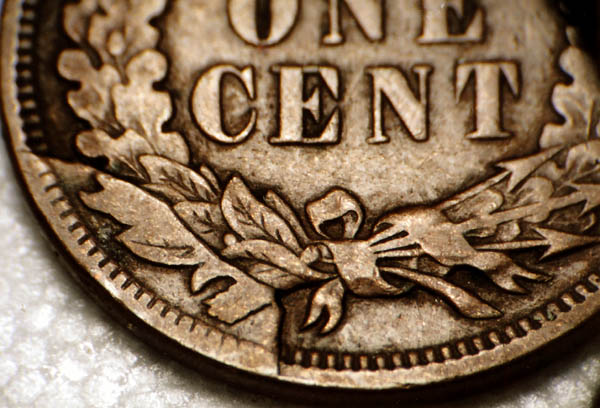
Photo © Ken Potter 2006
This 1906 Indian Head cent displays what is referred to as a Retained Major Die Break (Retained
Cud). Notice how the
area running from about 6:15 o'clock to about 7:00 is raised up at a different
level from the rest of the coin.
In this case a chunk of the die supposedly broke away from the rest of the die but remained
in place, at least temporarily, by gravity.
The fact is that the vast majority of the so-called Retained Cuds most probably
are not.
Cuds are often confused with die breaks or even die chips
that are found within the interior of the coin design but have no connection to
the shank of the die or edge of the coin. A die break -- no matter how large
-- that does not involve the edge of the die is not a cud -- it is simply a die
break which may be defined as a Small Die Break or Large Die Break (see Alan
Herbert's Official Price Guide To Mint Errors for an in-depth discussion on die
breaks, chips, etc.). Some collectors, through plain ignorance or for monetary
reasons (because the term "cud" seems to imply greater value) will
sometimes refer to these as "interior cuds." The fact is,
the error-variety hobby agreed decades ago that if a die break occurs anywhere
away from the edge (or neck of the die) within the field of coin design it is
NOT a cud. Sellers, inventing new terms to replace perfectly good, traditional
terms are not going to make simple die breaks into cuds! Another term
we've seen come into use in recent years is interior die break.
Unless a die break is defined as a Major Die Break or a Collar Die Break or a
Rim Die Break, etc., it is implied to be a die break found within the die
face. Specialists got along for decades understanding perfectly well what
the term "die break" meant and there is no need to start
modifying this term now. If you do not understand the terms, you need to
buy some books and read them -- it's that simple! Of course if you do
decide to use the term interior die break anyway it should cause little
confusion but it is unnecessary.
Since pictures speak louder than words, I'll illustrate the
differences between the various variety coin classifications discussed here and
elaborate upon them further below.
Note: This
discussion does not include Rim Cuds, Collar Cuds
which will be added to this discussion at a later date

Photo © Ken Potter 2003
This Clad Washington Quarter dollar shows a nice cud covering most of the
date.
The void in the die created by the cud caused so much metal to flow into the
obverse die,
that the area opposite it on the reverse did not strike up. This is
typical of larger cuds but
may not occur on smaller cuds. Notice the area of missing detail in STATES OF
AMERICA.
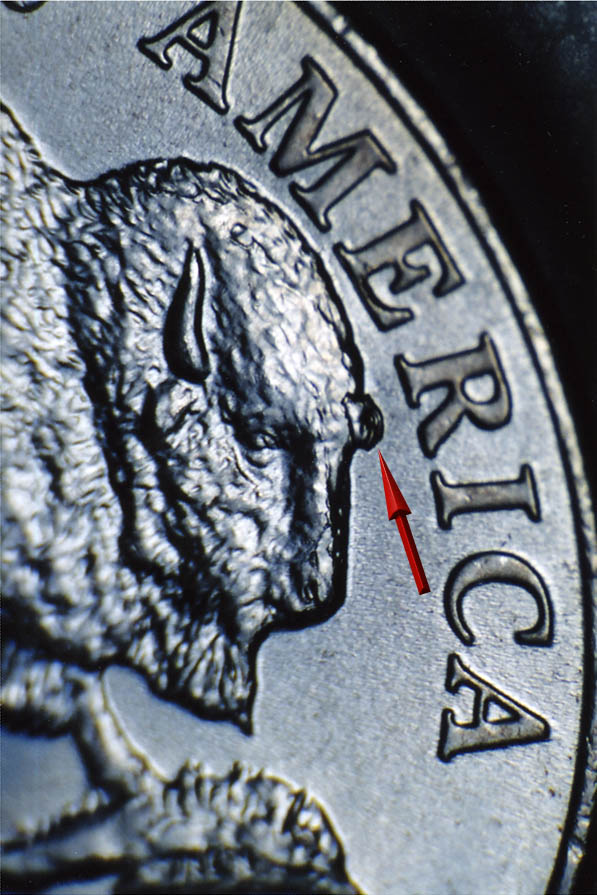
Photo © Ken Potter 2006 / Coin courtesy of Bill
Reese
A large die break is apparent on this 2005-D Jefferson five cent piece w/
Bison Reverse.
Die breaks like these are often described as cud by folks who do not know any
better.
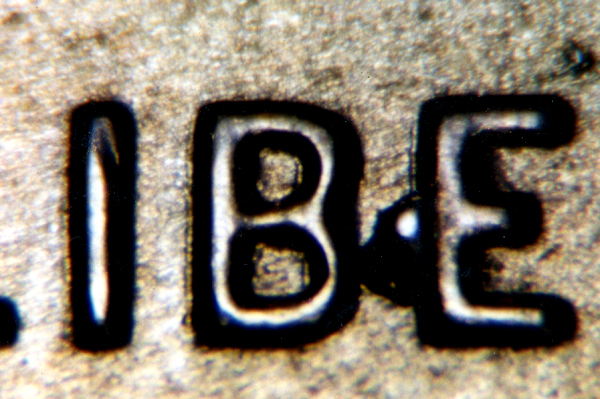
Photo © Ken Potter 2003
Here we see a die chip between the B and E of LIBERTY on a 1996 Lincoln
cent! It's NOT a Cud!
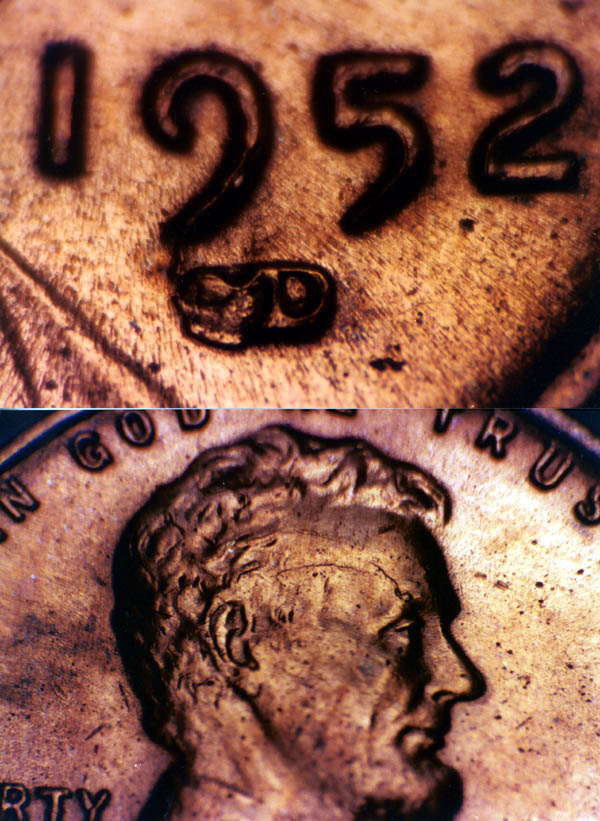
Photo © Ken Potter 2005
On this 1952-D Lincoln cent we see a die crack that extends down from the tail
of the 9 to a die break
extending west from the Mint mark and die cracks (of ten called a Cracked
Skull) on Lincoln's
Head. A die chip is at the end of the crack closest to the eye. None of
these are Cuds!
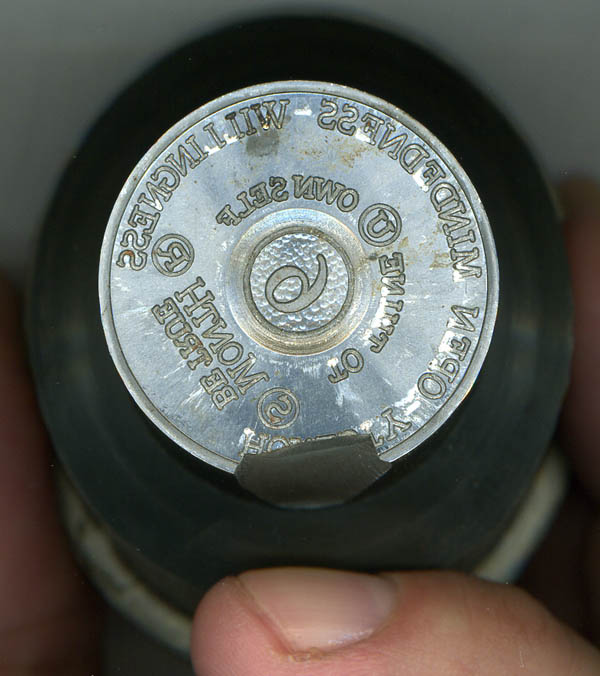
Photo © Ken Potter 2003 / Die from the Ken Potter Collection
A view of the face of an Alcoholics Anonymous Die Containing a Major Die
Break
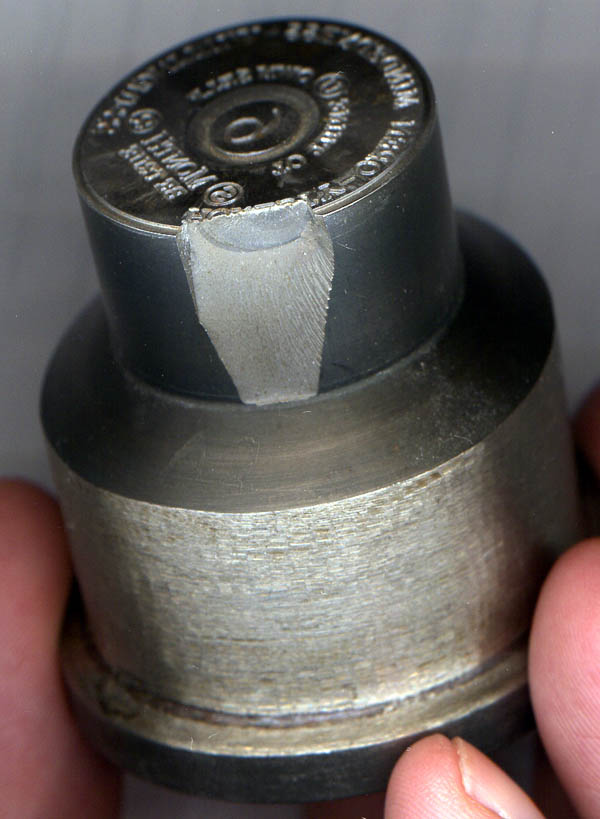
Photo © Ken Potter 2003 / Die from the Ken Potter Collection
A side view of the Alcoholics Anonymous Die Containing a Major Die Break
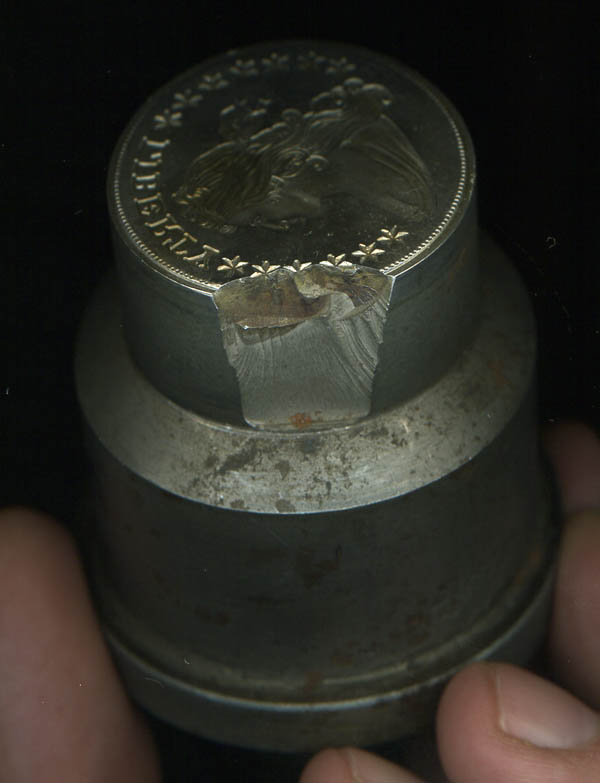
Photo © Ken Potter 2003 / Die from the Ken Potter Collection
A side view of a Bust Dollar Silver Round Die Containing a Major Die Break
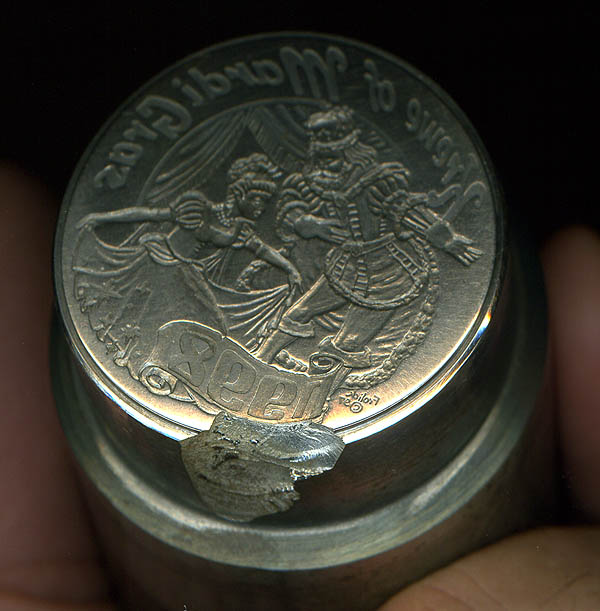
Photo © Ken Potter 2003 / Die from the Ken Potter Collection
A 1998 Mardi Gras Die Containing a Major Die Break
For more information on this item click below:
Send email to: KPotter256@aol.com
For more detailed information on
Doubled Dies and other forms of doubling, we recommend that you visit our
Educational Image Gallery
Educational Image
Gallery
Free counters provided by Andale.